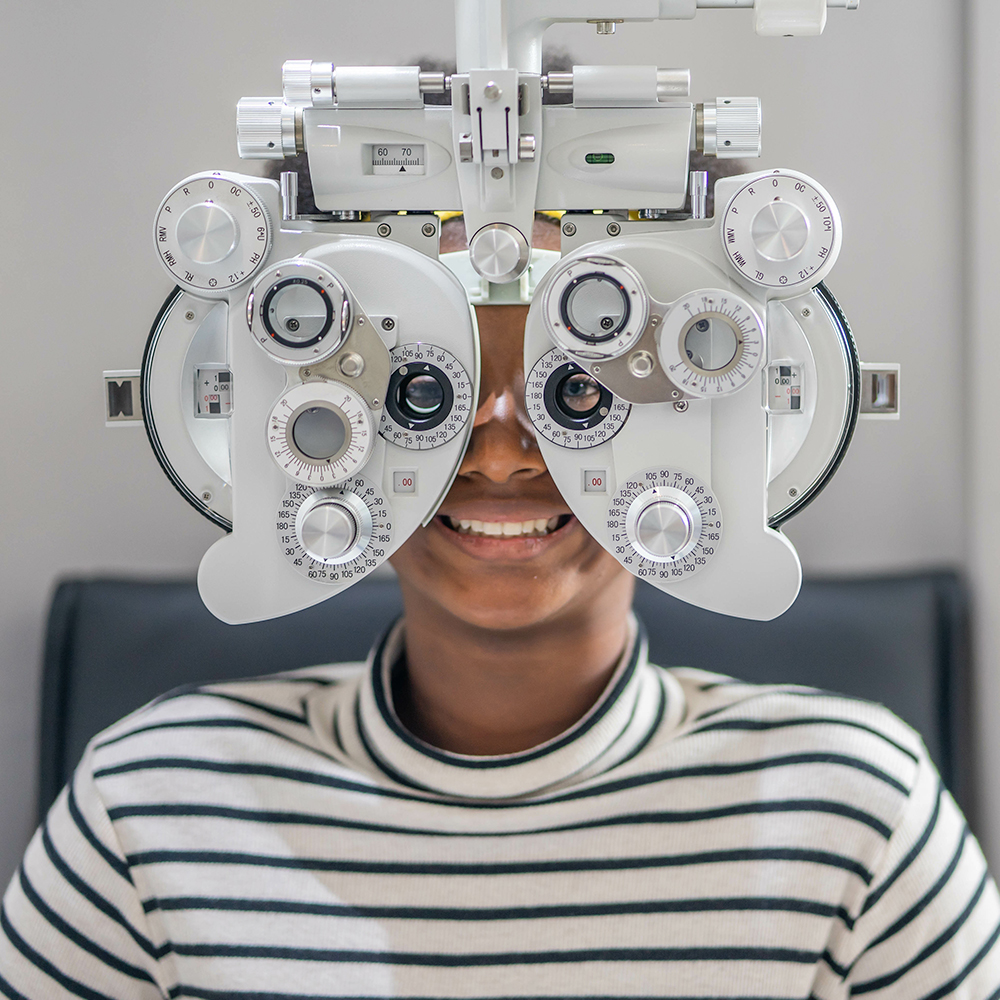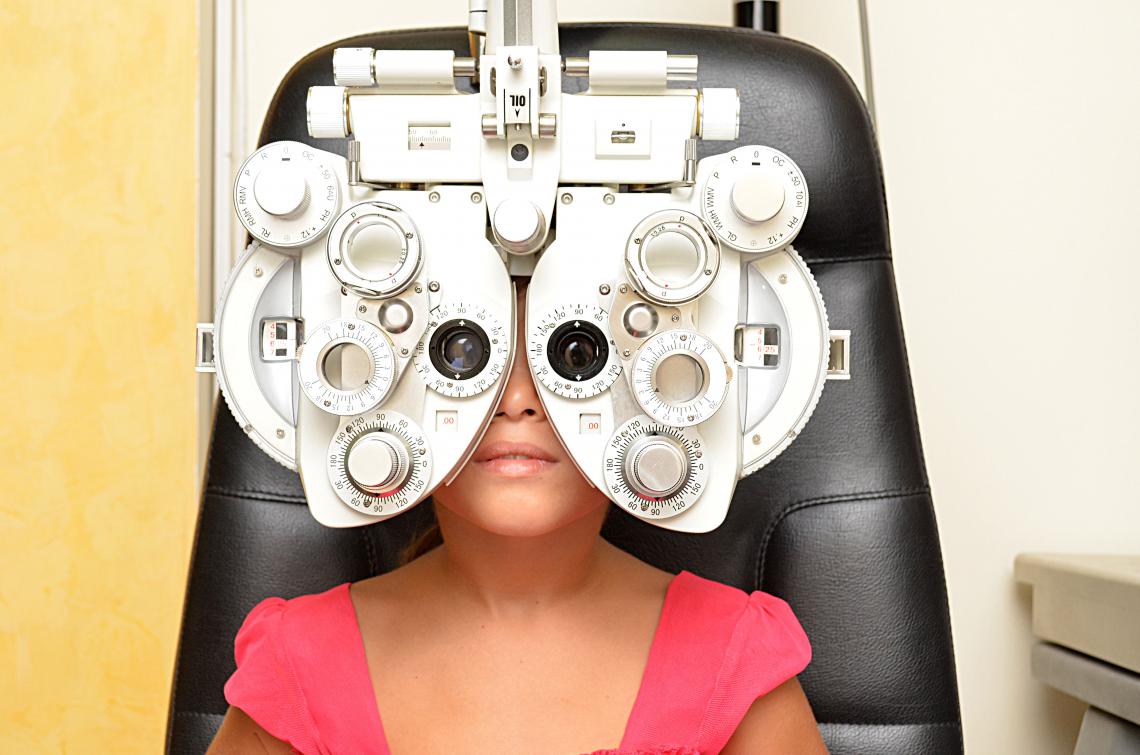How an Eye Doctor Can Transform Your Vision Health in Chino
How an Eye Doctor Can Transform Your Vision Health in Chino
Blog Article
Exploring the current Technological Innovations in Optometry and What They Mean for Optometrists
From the accuracy of Optical Coherence Tomography to the nuanced understandings used by AI-driven diagnostic devices, these technologies are establishing brand-new standards in individual evaluation and treatment. As these advancements permeate the method, eye doctors are faced with the difficulty of accepting these tools to improve person outcomes.
Technologies in Diagnostic Tools
Progressing the area of optometry, advancements in diagnostic tools have actually changed the means eye treatment specialists assess and detect aesthetic disabilities and ocular problems. The previous years has experienced substantial technical advancements, enabling more exact and thorough examinations.
An additional trick innovation is the introduction of innovative corneal topography systems, which map the surface curvature of the cornea with accuracy. These devices are especially useful for suitable contact lenses and identifying corneal disorders. Electronic retinal imaging has changed conventional ophthalmoscopy, providing thorough, panoramic views of the retina that help with detailed visual assessments.
The growth of wavefront aberrometry has also been important, making it possible for the analysis of refractive errors with unequaled precision (Opticore Optometry). This technology helps in personalizing rehabilitative lenses and enhancing medical end results for refractive surgical treatments. Jointly, these diagnostic innovations empower eye doctors to deliver remarkable client treatment, making sure early intervention and tailored therapy techniques, ultimately improving aesthetic wellness results
AI in Individual Administration
Building on the foundation of advanced analysis devices, the unification of fabricated knowledge (AI) in individual administration stands for a transformative leap for optometry. AI systems are progressively used to improve efficiency, precision, and personalization in patient care. By analyzing substantial quantities of data, AI can identify patterns and predict potential ocular conditions, making it possible for eye doctors to tailor interventions better. This ability is crucial in managing chronic eye conditions such as glaucoma and diabetic person retinopathy, where early discovery and constant monitoring are vital.
In addition, AI-driven systems assist in streamlined individual interactions and management processes. Automated scheduling, digital examinations, and personalized follow-up plans not just boost client complete satisfaction yet also optimize time administration for practitioners. These systems can triage individuals based upon the urgency of their problems, ensuring that those in critical requirement obtain prompt attention.
Moreover, AI boosts decision-making by giving optometrists with evidence-based suggestions and therapy paths. By incorporating information from electronic health records, AI tools use understandings that notify clinical decisions, decreasing the danger of errors and enhancing individual end results. As AI remains to develop, its function in individual management will likely expand, improving the landscape of optometric treatment.
Advances in Retinal Imaging
In the realm of optometry, retinal imaging has seen amazing technical advancements that are improving analysis capacities and client care. Technologies such as Optical Coherence Tomography (OCT) and fundus digital photography have revolutionized just how optometrists imagine and analyze the retina.
Enhanced imaging techniques like OCT angiography are further refining analysis accuracy. This non-invasive technique maps blood circulation in the retina, providing critical understandings into vascular health without the requirement for dye shots. Additionally, flexible optics technology is being incorporated into retinal imaging systems to deal with ocular aberrations, supplying unmatched image quality. Such innovations facilitate the recognition of minute retinal modifications that could represent illness development.
Furthermore, innovations in expert system are increasing retinal imaging by enabling automated analysis of huge datasets. These systems aid optometrists in determining patterns a sign of pathology, therefore enhancing diagnostic accuracy and effectiveness. Jointly, these technologies are transforming retinal imaging into a cornerstone of contemporary eye care, enhancing results and increasing healing opportunities.
Teleoptometry's Expanding Role
Teleoptometry is increasingly coming to be an essential element of eye care, driven by innovations in electronic communication and diagnostic devices. This is especially advantageous in underserved and country areas where accessibility to specialized eye care is often minimal.
The combination of synthetic knowledge (AI) additional boosts teleoptometry, allowing the go to the website analysis of visual information and helping in the discovery of eye conditions such as glaucoma and diabetic person retinopathy. AI-powered algorithms can swiftly interpret intricate imaging data, giving eye doctors with valuable insights that reinforce medical decision-making.
Moreover, teleoptometry sustains continuity of care via seamless integration with electronic wellness documents (EHRs), enabling optometrists to maintain comprehensive client backgrounds. When consulting with different professionals., this ensures that clients obtain regular and customized treatment even.
Despite these advantages, obstacles continue to be, including guaranteeing data safety and taking care of person expectations. Nevertheless, teleoptometry represents a considerable stride in the direction of more obtainable, reliable, and patient-centered eye treatment. As modern technology develops, its function is poised to broaden additionally.

Future Fads in Eye Treatment
A myriad of ingenious patterns is established to improve the future of eye care, driven by technological developments and the progressing needs of individuals. One considerable pattern is the combination of expert system (AI) in diagnostics, which promises to improve the accuracy and effectiveness of eye evaluations. AI algorithms can analyze large amounts of data from retinal photos, potentially spotting conditions like diabetic retinopathy and glaucoma earlier than typical techniques.
Additionally, individualized medicine is gaining grip in optometry, with genetic testing educating personalized treatment strategies. This method aims to maximize client outcomes by customizing interventions to specific genetic accounts. Wearable innovation, such as smart call lenses, is likewise imminent, offering real-time surveillance of intraocular stress or glucose degrees, therefore offering continuous insights right into systemic and eye health and wellness.
The fostering of augmented fact (AR) and online fact (VR) in training and person education is an additional emerging pattern. These he said innovations supply immersive experiences that can improve understanding and abilities both for clients and eye doctors. As these patterns advance, eye doctors must remain abreast of technical improvements to provide sophisticated care, guaranteeing better client results and satisfaction in the vibrant landscape of eye treatment.
Conclusion

Jointly, these diagnostic advancements encourage eye doctors to deliver superior person treatment, guaranteeing early treatment and tailored therapy techniques, ultimately boosting visual health results.

As these technologies proceed to advance, optometrists should adjust and include them into practice, eventually maximizing workflow efficiency and raising the criterion of eye treatment supplied to patients.
Report this page